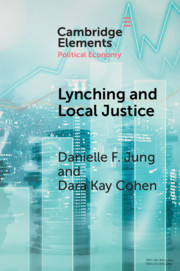Element contents
Lynching and Local Justice
Published online by Cambridge University Press: 14 September 2020
Summary
Information
- Type
- Element
- Information
- Series: Elements in Political EconomyOnline ISBN: 9781108885591Publisher: Cambridge University PressPrint publication: 17 September 2020
Bibliography
Accessibility standard: Unknown
Why this information is here
This section outlines the accessibility features of this content - including support for screen readers, full keyboard navigation and high-contrast display options. This may not be relevant for you.Accessibility Information
- 38
- Cited by
